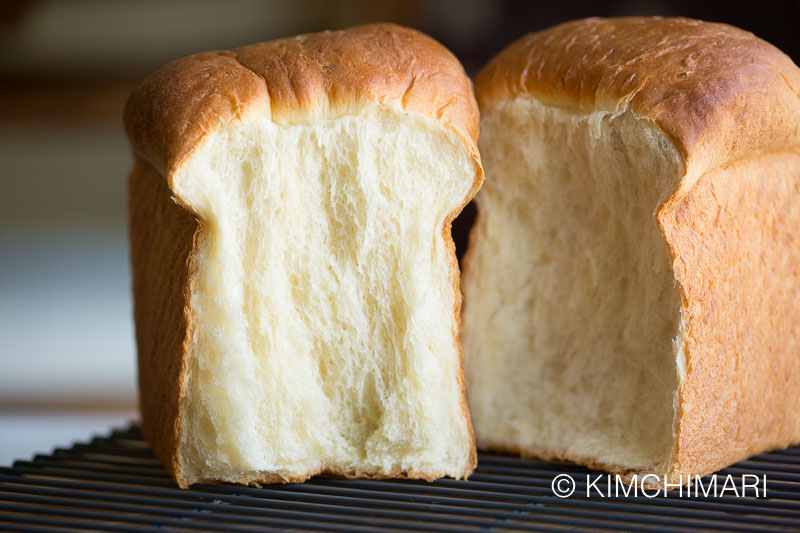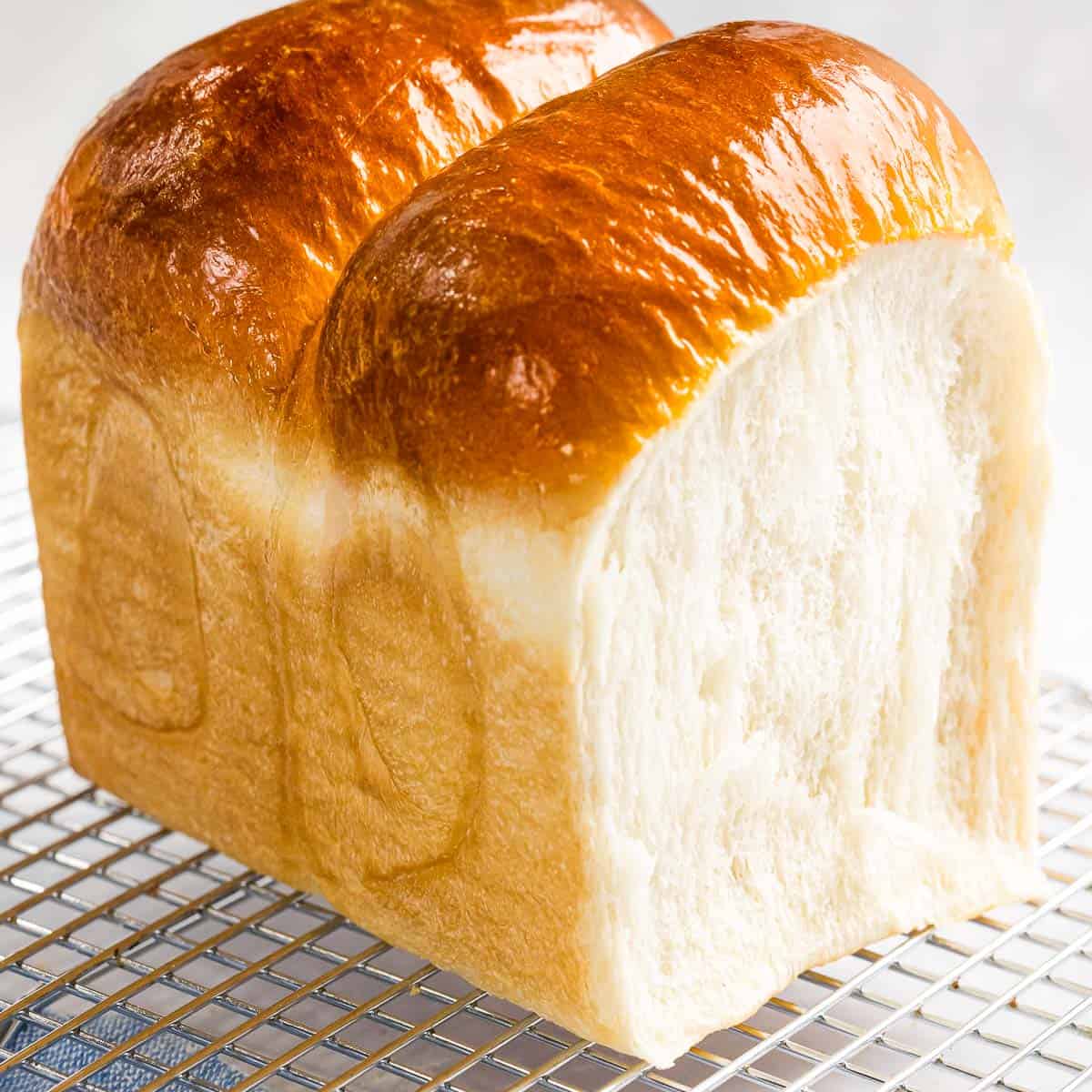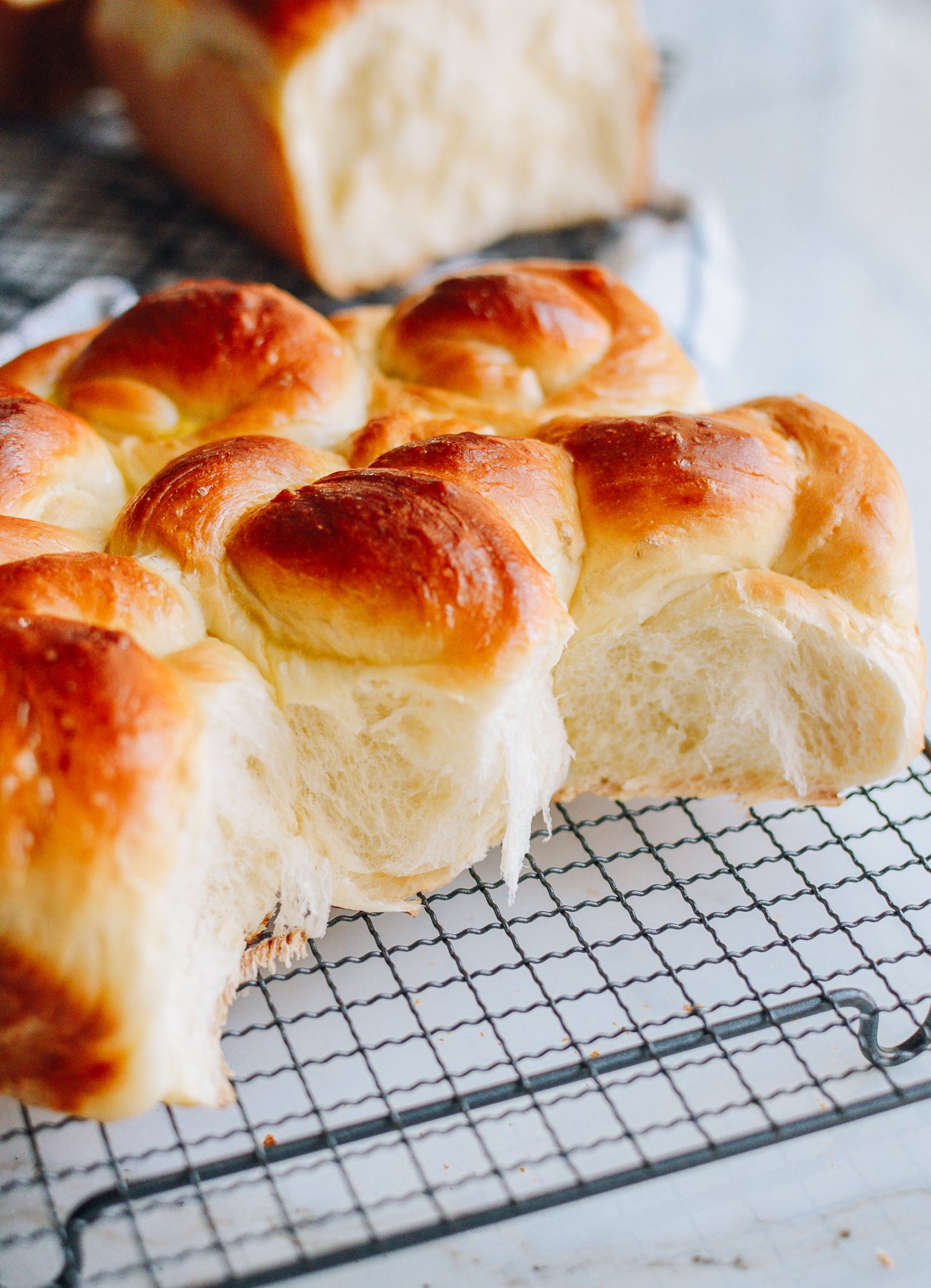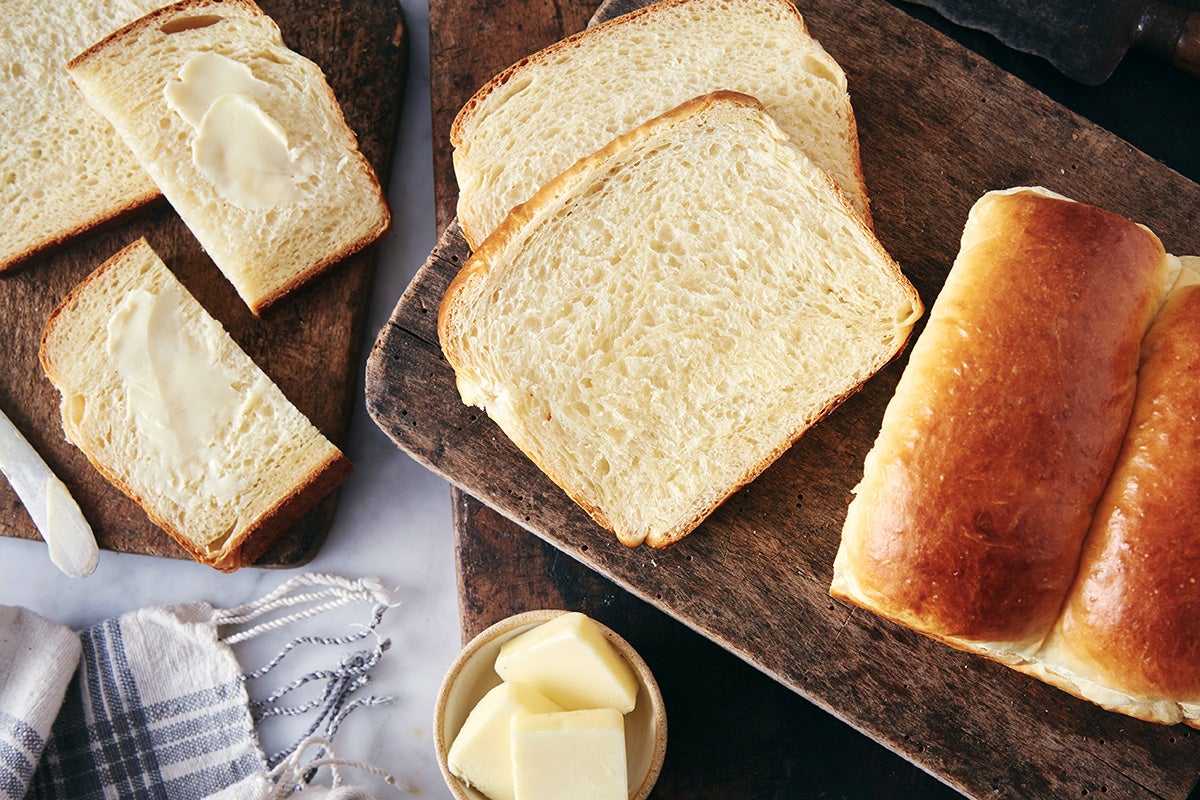When panko, Japanese bread crumbs, first appeared here, American cooks leaped to embrace their spiky crunch. (The first article about it in the New York Times appeared in 1998.) But how could breadcrumbs arrive from Japan, a land without bread? The answer is here, in the lofty, feathery white bread that is a staple at bakeries in Asia — and in Asian bakery chains like Fay Da and Paris Baguette. (Panko is often made from the heels of the loaf, called the “ears” in Japanese.) Milk bread was developed in Japan in the 20th century, using tangzhong, a warm flour-and-water paste traditionally used in China to make buns with a soft, springy texture and tiny air bubbles.
Surprisingly, milk bread with an incomparable crumb and buttery taste is a snap to make at home, using supermarket ingredients. Once the tanzhong is cooked and cooled — a matter of 10 minutes at the stove — you have an easy and immensely rewarding dough. It can be shaped into coils or round rolls, like pull-aparts, instead of loaves, or you can paint it with cinnamon sugar or dulce de leche or strawberry jam when you roll it out.

Soft and Fluffy Japanese Milk Bread

Try this milk bread recipe for the softest, fluffiest homemade milk bread! Also known as Japanese milk bread, Hokkaido milk bread, or shokupan.
Prep: 65min
Total: 90min
Serving Size: 1 serving
Nutrition Facts: calories 222 kcal, Carbohydrate 41 g, Protein 8 g, Fat 3 g, Saturated Fat 1 g, Trans Fat 1 g, Cholesterol 6 mg, Sodium 419 mg, Fiber 1 g, Sugar 5 g, unSaturated Fat 2 g, servingSize 1 serving
Ingredients:
- 4¾ cups bread flour
- 1¾ cups milk
- 2¼ Tablespoons sugar
- 1⅔ Tablespoons butter
- 2 teaspoons sea salt
- 3⅓ teaspoon active dry yeast
- 2¼ teaspoon dough enhancer ((optional) see Note 1)
Instruction:
- Mix: Attach the dough hook to your stand mixer. Add all the ingredients except the butter. Mix on low until there’s no more dry flour. Then add the butter and beat on high speed. The dough is ready when it forms into a ball and the surface is smooth and glossy. Check for proper gluten develop using the window pane test (See Note 2). Timing will vary but it took me 10 to 13 minutes.
- Proof: Form the dough into a smooth round ball and place into a see through proofing container that’s been coated with oil. Proof until doubled in size in a warm, humid environment. See Note 3.
- Bench rest: On a well floured surface, divide the dough into 6 even pieces and roll each into a ball. Loosely cover and let it rest for 15 minutes.
- Shape: Roll each ball into an oval shape. Flip it over so the surface (crust) is on the bottom and do a letter fold (2 folds). Then roll it up to form a spiral and then pinch the seam closed. Place three spirals in each 1 lb loaf pan. Repeat for the other pieces (See step by step photos in recipe post above).
- Final proof: Proof in a warm humid place until doubled in size or it’s 1 cm below the rim of the loaf pan. Preheat your oven to 356° F.
- Bake: Bake at 356° F for 25 minutes or until it gets a golden brown crust. For a shiny, golden crust: Immediately after removing from the oven, brush on an egg wash coating for a shiny crust. Crack an egg in a small bowl and mix well. Using a pastry brush, apply a thin coating to the crust. The heat from the bread will cook the egg, giving you a shiny golden crust.
Milk Bread

This Asian milk bread recipe is a triumph. We have searched and tested for months, and finally have a perfect recipe for soft, buttery Chinese bakery milk bread.
Prep: 180min
Total: 205min
Serving Size: 1 serving
Nutrition Facts: calories 184 kcal, Carbohydrate 29 g, Protein 5 g, Fat 5 g, Saturated Fat 3 g, Cholesterol 36 mg, Sodium 238 mg, Fiber 1 g, Sugar 6 g, servingSize 1 serving
Ingredients:
- 2/3 cup heavy cream ((at room temperature))
- 1 cup milk ((plus 1 tablespoon, at room temperature; you can use whole, 1%, or 2% milk))
- 1 large egg ((at room temperature))
- 1/3 cup sugar
- 4 cups all-purpose flour ((you can also use 1/2 cup cake flour combined with 3 1/2 cups bread flour))
- 1 tablespoon active dry yeast ((or instant yeast))
- 1 1/2 teaspoons salt
- Egg wash ((beat 1 egg with 1 teaspoon water))
- Simple syrup ((1 tablespoon sugar, dissolved in 1 tablespoon hot water))
Instruction:
- In the bowl of a stand mixer fitted with a dough hook attachment, add the ingredients in the following order: heavy cream, milk, egg, sugar, cake flour, bread flour, yeast, and salt. Turn on the mixer to “stir,” and knead for 15 minutes, occasionally stopping the mixer to push the dough together. If the dough is sticking to the sides of the bowl, add a little more flour 1 tablespoon at a time until it pulls away from the sides (it should be sticking to the bottom of the mixing bowl, but not the sides). If kneading by hand, extend the kneading time by 5-10 minutes.
- Next, cover the dough with a damp towel, and place in a warm spot until the dough has doubled in size (1-2 hours). We proof our dough in a closed microwave with a mug of just-boiled water next to it.
- In the meantime, grease two baking vessels on all sides with butter. You can use two standard loaf pans, two 9-inch (23cm) round pans, or 1 loaf pan and 1 round pan.
- After the dough has doubled in size, put it back in the mixer, and stir for another 5 minutes to get rid of air bubbles. Dump the dough on a lightly floured surface, and cut it in half. To make loaves, shape each dough half into a rough rectangular shape, cut it cross-wise into three roughly equal pieces, and place in the loaf pan. Alternatively you can cut each dough half into 8 pieces, roll them into balls (or ropes that you can twist into buns), and put them in a round pan. You can also make 2 loaves, 16 rolls, or 1 loaf and 8 rolls. Once shaped, let the dough proof, covered, for another hour.
- Position a rack in the center of the oven, and preheat it to 350° F/175°C. Brush the risen dough with egg wash. Bake for 23-25 minutes, or until golden brown. Remove from the oven and brush the warm bread with sugar water to give it shine and sweetness.
Japanese Milk Bread

This recipe is our take on Japan’s Hokkaido milk bread, a loaf so light it’s often described as feathery. The technique to make it involves pre-cooking some of the flour and milk into a soft paste called tangzhong. (See “tips,” below to learn more about its origins.) This simple step yields a loaf that’s tender, moist, and stays fresh longer than loaves prepared the standard way. Bread made with tangzhong is far and away superior to the pre-sliced, plastic-wrapped loaves that you’ll find on grocery store shelves. Trust us: Once you bake and familiarize yourself with this loaf, you’ll never want to buy sandwich bread again!
Prep: 30min
Total: 3h25min
Yield: 16
Serving Size: 1 slice (45g)
Nutrition Facts: servingSize 1 slice (45g), calories 130 calories, Carbohydrate 19g, Cholesterol 20mg, Fiber 1g, Protein 4g, Sodium 160mg, Sugar 4g, Fat 4g, Saturated Fat 2g, Trans Fat 0g
Ingredients:
- 3 tablespoons (43g) water
- 3 tablespoons (43g) milk whole preferred
- 2 tablespoons (14g) King Arthur Unbleached Bread Flour
- 2 1/2 cups (300g) King Arthur Unbleached Bread Flour
- 2 tablespoons (14g) King Arthur Baker’s Special Dry Milk or nonfat dry milk
- 1/4 cup (50g) granulated sugar
- 1 teaspoon (6g) salt
- 1 tablespoon instant yeast
- 1/2 cup (113g) milk whole preferred
- 1 large egg
- 4 tablespoons (57g) unsalted butter melted
Instruction:
To make the tangzhong: Combine all of the ingredients in a small saucepan, and whisk until no lumps remain. , Place the saucepan over low heat and cook the mixture, whisking constantly, until thick and the whisk leaves lines on the bottom of the pan, about 3 to 5 minutes. , Transfer the tangzhong to a small mixing bowl or measuring cup and let it cool to lukewarm. , To make the dough: Weigh your flour; or measure it by gently spooning it into a cup, then sweeping off any excess. Combine the tangzhong with the remaining dough ingredients, then mix and knead — by mixer or bread machine — until a smooth, elastic dough forms; this could take almost 15 minutes in a stand mixer. , Shape the dough into a ball, and let it rest in a lightly greased bowl, covered, for 60 to 90 minutes, until puffy but not necessarily doubled in bulk. , Gently deflate the dough and divide it into four equal pieces; if you have a scale each piece will weigh between 170g and 175g. , Flatten each piece of dough into a 5″ x 8″ rectangle, then fold the short ends in towards one another like a letter. Flatten the folded pieces into rectangles again (this time about 3″ x 6″) and, starting with a short end, roll them each into a 4″ log. , Place the logs in a row of four — seam side down and side by side — in a lightly greased 9″ x 5″ loaf pan. , Cover the loaf and allow it to rest/rise for 40 to 50 minutes, until puffy. , Towards the end of the rising time, preheat the oven to 350°F. , To bake the bread: Brush the loaf with milk and bake it for 30 to 35 minutes, until it’s golden brown on top and a digital thermometer inserted into the center reads at least 190°F. , Remove the loaf from the oven and cool it in the pan until you can transfer it safely to a rack to cool completely. , Store leftover bread, well wrapped, at cool room temperature for 5 to 7 days; freeze for longer storage.
Japanese milk bread

This bread is the softest, fluffiest loaf that’s perfect for every day use.
Prep: 20min
Total: 50min
Yield: 16
Serving Size: 1 serving
Nutrition Facts: calories 103 kcal, Carbohydrate 17 g, Protein 3 g, Fat 2 g, Saturated Fat 1 g, Cholesterol 15 mg, Sodium 154 mg, Fiber 1 g, Sugar 3 g, servingSize 1 serving
Ingredients:
- 2 tbsp bread flour ((2tbsp is approx 20g))
- 6 tbsp water
- 300 g bread flour ((300g is approx 2 cups plus 2 tbsp))
- 2 tsp fast acting yeast ((technically a little under but can use 1 sachet, 1/4oz/ 7g))
- 120 ml milk ((lukewarm or room temp, but not hot))
- 30 g unsalted butter (melted but not hot)
- 1 tsp salt
- 3 tbsp sugar ((caster sugar/fine))
- 1 egg
- 1 egg ((lightly beaten – won’t need all))
Instruction:
- Warm the flour paste gently over a medium-low heat until it thickens, stirring constantly. You should see trails left by the spoon/whisk as you stir it. Set the pan aside to cool.
- Bake the loaf for approx 30 minutes until golden brown. If it browns too fast, tent with foil for the last part of cooking. Turn onto a cooling rack to cool before slicing.
How To Make A Super Soft Milk Bread Loaf | Easy To Make
FAQ
What makes milk bread different?
What does milk bread taste like?
What is special about milk bread?
Does milk bread taste different?
